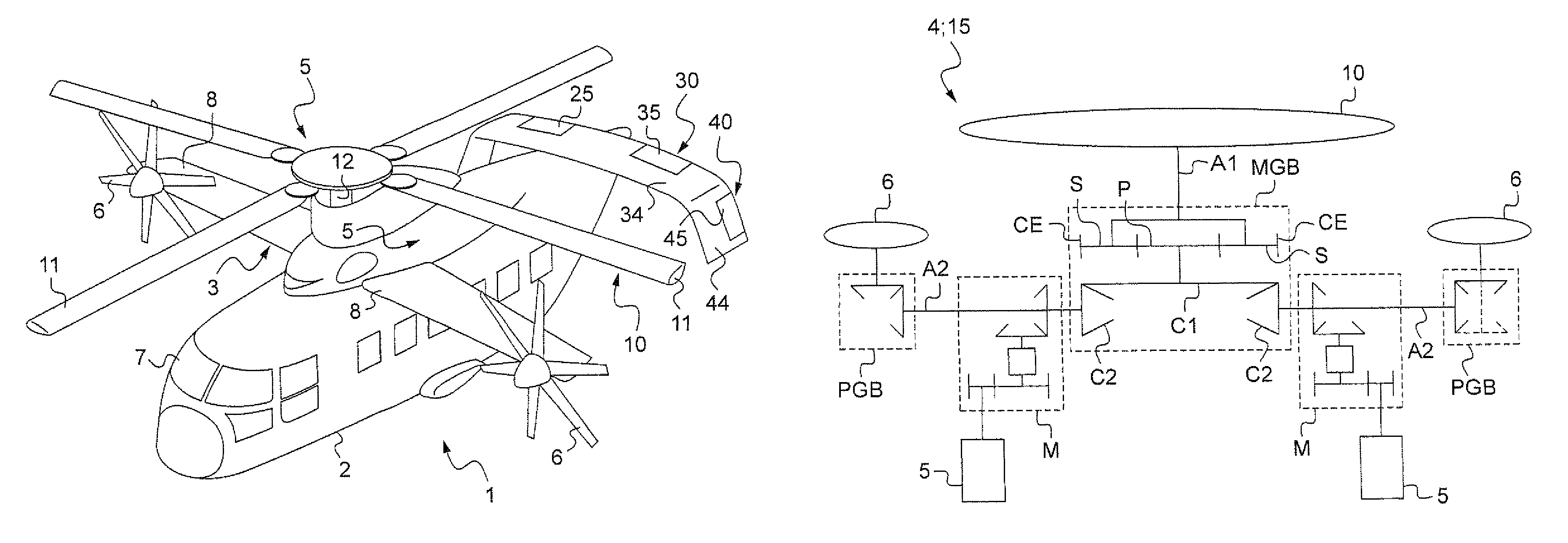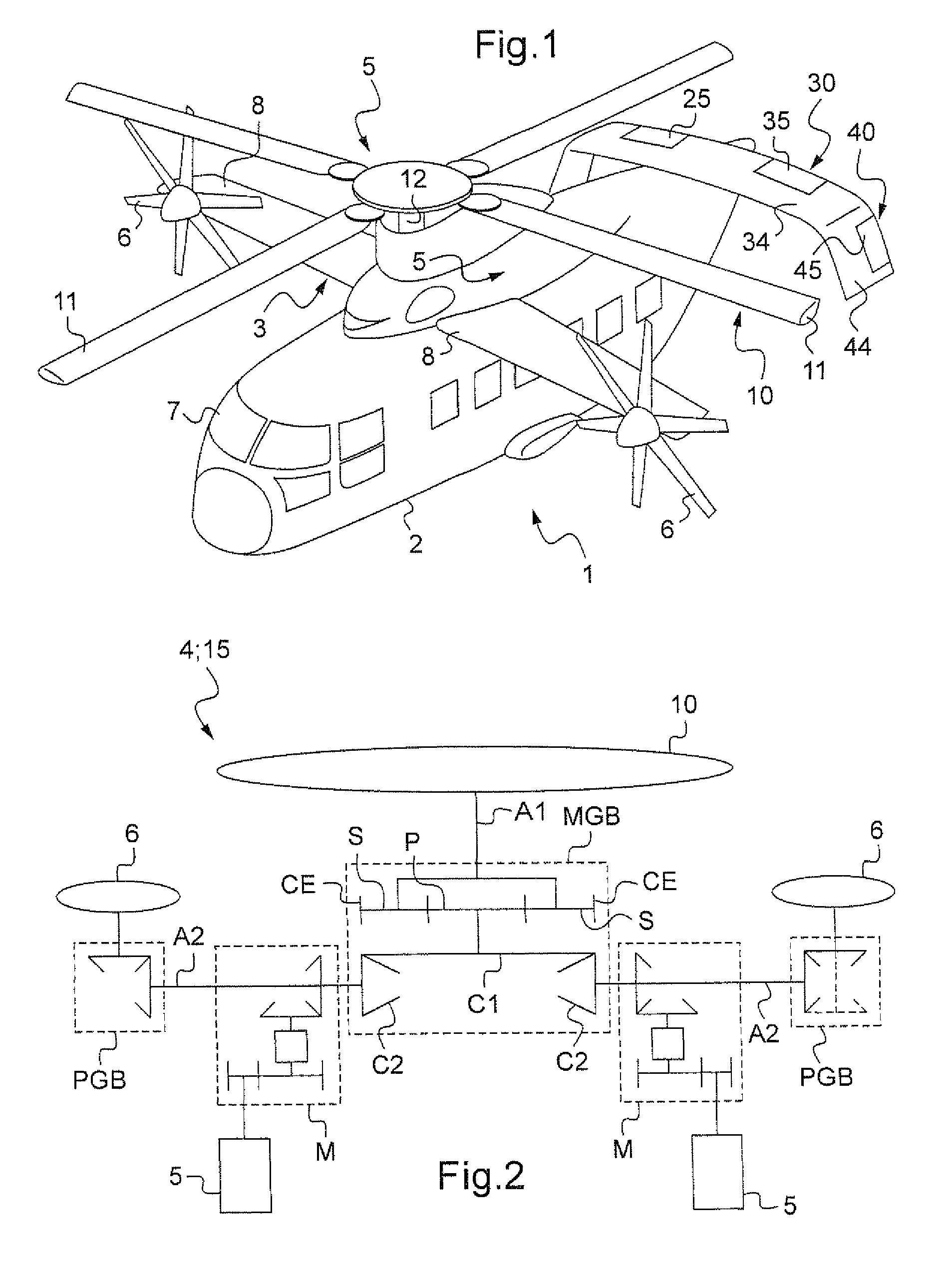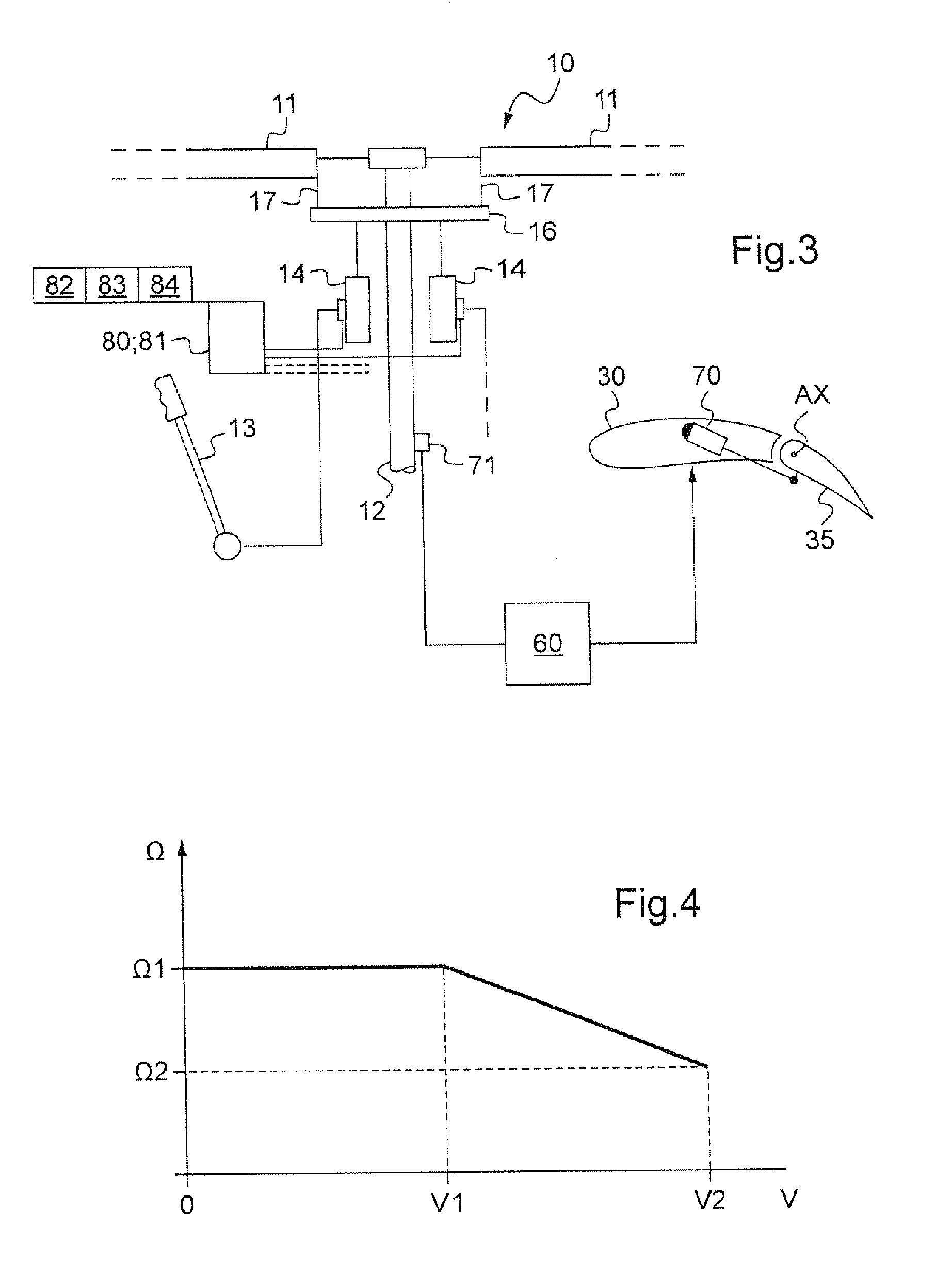Fast hybrid helicopter with long range and an optimized lift rotor
a hybrid helicopter and long-range technology, applied in the field of hybrid helicopters, can solve the problems of inability to perform hovering flight, inability to vertical flight, complex and expensive technology, etc., and achieve the effect of minimizing parasitic drag
- Summary
- Abstract
- Description
- Claims
- Application Information
AI Technical Summary
Benefits of technology
Problems solved by technology
Method used
Image
Examples
Embodiment Construction
[0149]In FIG. 1, there can be seen a hybrid helicopter 1 made in accordance with the invention.
[0150]In the usual way, the hybrid helicopter 1 comprises a fuselage 2 with a cockpit 7 at the front thereof, a rotor 10 for driving blades 11 in rotation by means firstly of two turbine engines 5 disposed on top of the fuselage 2 (not visible in FIG. 1 because of the presence of fairing), on either side of the longitudinal plane of symmetry of the rotorcraft, and secondly a main first gearbox MGB (not shown in FIG. 1).
[0151]Furthermore, the hybrid helicopter 1 is provided with a high wing 3 made up of two half-wings 8 disposed on top of the fuselage 2, these half-wings 8 being substantially rectangular in plane view and presenting a negative dihedral angle.
[0152]The hybrid helicopter 1 is propelled by two propellers 6 driven by the two turbine engines 5, one propeller 6 being disposed at each of the outer ends of the wing 3.
[0153]Furthermore, in the vicinity of the rear end of the fuselag...
PUM
 Login to View More
Login to View More Abstract
Description
Claims
Application Information
 Login to View More
Login to View More - R&D
- Intellectual Property
- Life Sciences
- Materials
- Tech Scout
- Unparalleled Data Quality
- Higher Quality Content
- 60% Fewer Hallucinations
Browse by: Latest US Patents, China's latest patents, Technical Efficacy Thesaurus, Application Domain, Technology Topic, Popular Technical Reports.
© 2025 PatSnap. All rights reserved.Legal|Privacy policy|Modern Slavery Act Transparency Statement|Sitemap|About US| Contact US: help@patsnap.com



